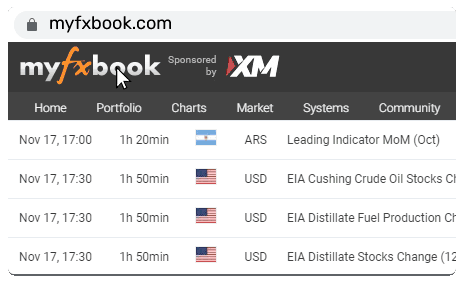Euro’s Journey, Global Dynamics, and the Unfolding Impact of Geopolitics

WEEKLY SUMMARY
The EUR/USD witnessed a rollercoaster ride between 1.0825 and 1.0965 over the past week. Amidst this volatility, notable events unfolded, including the impact of US consumer price data, legal developments in Germany concerning the supplementary budget, and the nuanced response to the Federal Reserve's assertive interest rate strategy.
Last week's trading began with swift EUR/USD price jumps, triggered by influential US consumer price data. Despite weaker industrial figures in the eurozone and robust retail sales in the USA, the exchange rate made a determined attempt to breach the crucial 1.0900 mark by week's end, propelled by solid European consumer price data.
In the realm of German fiscal matters, the Federal Constitutional Court in Karlsruhe delivered a significant verdict, declaring the 2021 supplementary budget unconstitutional. This ruling raised concerns about a 60 billion euros deficit in the federal budget, potentially leading to further repercussions. Approximately 26 billion euros, not covered by the Karlsruhe ruling, may face cuts, pertaining to the Economic Stabilisation Fund (WSF).
Amidst these developments, the Federal Reserve's resolute interest rate escalation strategy prompted a more cautious market sentiment. However, officials maintain an adaptable approach, considering possible adjustments if the 2% inflation target is not met. The minutes of the meeting underscore the scrutiny of the US labour market, with recent data stability showing signs of weakening. Despite initial market moderation, the support at 1.0900 EUR/USD remains intact, albeit facing temporary setbacks in today's trading. The release of the US initial jobless claims holds the potential to further influence the dynamics of the American labour market, consequently impacting the trajectory of EUR/USD.
SHORT TERM → TARGET: 1.0765
I project that the EUR/USD will maintain a short-term trading range, oscillating between 1.0765 and 1.0960. Amidst this forecast, several critical global developments are shaping the landscape.
The ongoing budget crisis in the German government, exacerbated by the recent decision of the German Federal Constitutional Court, continues to unfold. The suspension of the Economic Stabilisation Fund (WSF) until year-end adds to the complexity, raising questions about a staggering 100-billion-euro shortfall. A resolution to this fiscal conundrum is currently elusive.
On the international front, a ceasefire agreement brokered by Qatar has brought a temporary halt to hostilities between the Israeli government and Hamas. This accord involves the release of hostages on both sides, signalling a positive impact on stock markets. However, the oil markets remain poised for the upcoming OPEC+ meeting.
The interest rate markets echo the sensitivity of EUR/USD to shifts in the long end of yield curves in both America and Europe. Central bank meetings in mid-December, particularly those of the Federal Reserve and ECB, hold significance in determining monetary policy strategies. Recent consumer price data has alleviated pressure for a more restrictive monetary policy, redirecting focus toward the anticipation of interest rate reductions.
Following the EUR/USD rate surpassing the 61.8% level on the medium-term target of 1.0960, the stochastic indicator signalled a correction in yesterday's trading. Anticipating a correction this week, initial targets are set at 1.0840 and 1.0765 sequentially. While a fall beyond this range is deemed improbable this week, market dynamics remain fluid and subject to ongoing developments.
MIDDLE TERM → TARGET: 1.1060
Central Banks: As we approach the year's end, the monetary policy landscape is anticipated to experience a period of relative calm. The major central banks are not scheduled to convene again until mid-December. While expectations at the Federal Reserve's September meeting hinted at a year-end interest rate hike, this projection has nearly been entirely discounted by the market. The marginally weaker inflation data serves as an initial indication of this shift. Market participants now envision that the interest rate zenith has been reached for both central banks, prompting discussions among Council members about maintaining or potentially lowering the key interest rate. Continuous scrutiny will be applied to data releases and economic developments in their respective economies.
Inflation: The inflation data for October and November underscores the impact of the central banks' restrictive monetary policies. In the Eurozone, aside from Spain, the inflation rate for October was lower than anticipated. The Netherlands experienced deflation for the second consecutive month compared to the same period last year, and Belgium is grappling with deflationary prices. Unexpectedly, decreased energy prices led to an inflation uptick in Germany. The ECB, for now, maintains its outlook, with a cautious acknowledgment of geopolitical risks.
Economy: Positive economic surprises have waned globally and in the G10 countries. Disappointing PMI figures in China and Brazil, coupled with below-expectation retail sales in Germany, have contributed to this trend. However, the IFO index surprised on the upside. In France, while the PMI data for the manufacturing sector disappointed, the services index exceeded expectations. Notably, a crisis in residential construction is now evident, with figures from the Ifo Institute revealing that one in ten companies is facing financing difficulties. Additionally, 22.2% of companies are contending with cancelled projects due to high interest rates and construction costs, potentially leading to a negative spiral effect impacting rental prices and inflation. These considerations are likely to be considered by the ECB in its deliberations.
Politics: Ongoing political unrest persists on multiple fronts. The Russia-Ukraine conflict, although less prominent in media coverage, remains a simmering concern. The UN's decision not to condemn terror in Israel has triggered a split within the organization, prompting calls for withdrawal from countries like the Czech Republic. Germany's abstention from the UN resolution has generated controversy, potentially leading to heightened tensions. Furthermore, the evolving political dynamics between China and the USA continue to be closely monitored for their potential impact on the global landscape.
LONG TERM → TARGET: 1.1200
The EUR experienced a surge to 1.1200 midway through the year, only to later dip below 1.0700. My initial year-end prediction, contingent on the absence of unforeseen catastrophes driving investors to the USD, held true. This outlook was bolstered by the optimistic U.S. inflation forecast, with the impact of the Fed's interest rate policy being felt. Notably, the Federal Reserve initiated the interest rate cycle earlier than the European Central Bank, influencing the currency pair through central bank decisions and economic indicators. In the short and medium term, the euro's potential is constrained. However, as the interest rate gap between the United States and Europe narrows in the coming year and the US dollar sheds its haven status, the currency market is anticipated to stabilize, leading to a potential appreciation of the euro once again. Over the long term, the risk of high US government debt and potential challenges with debt refinancing looms, posing the possibility of a considerably weaker US dollar.
The ongoing war in Ukraine, while currently taking a backseat in the financial market, remains a factor of consideration. Interest rate developments in specific regions now take precedence. A swift resolution to the conflict could have positive repercussions for Europe, simplifying the food supply chain and potentially acting as an economic stimulus program through the reconstruction of Ukraine. The European Central Bank's interest rate decisions will be crucial, with higher interest rates potentially impacting the cost of reconstruction. The upcoming U.S. presidential election in November 2024 is already influencing the financial landscape, with expectations of the Fed implementing a more expansionary monetary policy, suggesting a potential weakening of the U.S. dollar (risk-on).
Reflecting on economic projections, the eurozone economy contracted in Q1 2023 and Q4 2022, but our economists now anticipate a slight GDP growth of +0.5% in 2023. On the U.S. side, a soft landing is expected, dispelling previous concerns of a "mini" recession. However, negative growth of -0.2% is projected for Germany. Inflation forecasts for 2024 remain on the downside, with geopolitical risks such as tensions between China and the USA regarding Taiwan ever-present. Investors, seeking safe havens during uncertain times, may turn to the US dollar, potentially impacting its significant weakening above 1.1200 by mid-2024.
This content may have been written by a third party. ACY makes no representation or warranty and assumes no liability as to the accuracy or completeness of the information provided, nor any loss arising from any investment based on a recommendation, forecast or other information supplied by any third-party. This content is information only, and does not constitute financial, investment or other advice on which you can rely.



















